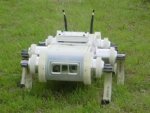Overview
RHex is a biologically inspired hexapedal robot invented and first characterized at the dawn of the century as part of a large DARPA funded consortium. A variety of RHex platforms have been developed since that time, and our lab has been particularly active in developing new versions for studying biologically inspired locomotion, gait control, and sensor based navigation as well as for developing novel courses and other educational materials.
RHex platforms all include six legs, each with a single rotary actuator at the hip. Legs are designed from compliant materials to produce energetic running gaits. The leg modules are controlled from a central computer, which takes user commands or sensor feedback to decide how the legs should move.
The project has been mostly focused on higher order autonomy for the RHex robot, incorporating additional sensors for robust state estimation, visual navigation, and obstacle avoidance, as well as greater dexterity in controlling its legs to climb over and through obstacle fields.
RHex Robot Platforms
Current Research Platforms
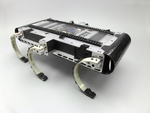
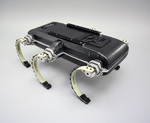
Past Platforms
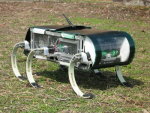
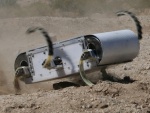
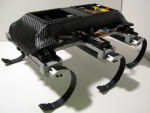

Commercial Robots
